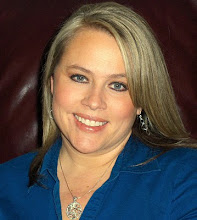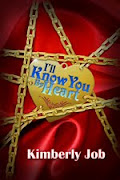
I love to read Christmas stories. They get me in the right frame of mind for the Christmas season--help me focus on the important things.
The Santa Letters is just such a story. It begins with a look at the Jensen family. We see how much Emma and William love one another and their family. The story turns tragic as we realize that William has died and Emma is left alone, struggling to raise and support her children. It is Christmas time and Emma is feeling anything but cheerful.
One evening a mysterious, yet beautiful, letter arrives on their doorstep. It begins a journey of self-discovery and forgiveness. The family receives a new letter each day with instructions for an activity they need to complete together. Through these activities and acts of service they grow closer together and bring peace and love to their home for the Christmas season. They receive many gifts and reminders about the good things in life from the letters such as warmth, music, traditions, laughter, friendship, heritage, and ultimately healing.
The Jensens come to realize that the joy of Christmas doesn't have to be lost forever - and that God's love can heal any wound, no matter how deep.It is a heartwarming look at the grief a family goes through when losing a loved one. It was particularly meaningful for me because I'm struggling with some personal losses myself. It gave me renewed determination to be grateful for what I have and the desire to focus on the positive
Now, a few comments from my writers point of view: There was a little too much head-hopping and some POV issues throughout the book. I felt like we saw a lot of emotion from Emma, but I wanted to see a little more from the children. The perfect family life they had seemed a little too ideal. Most families have some fighting and contention and if some of that had been included, it would have seemed a little more realistic. However, I realize that wasn't the intention of the book.
I absolutely love the cover. It's deep rich colors and elegant feel make it perfect for gift giving. It will be a permanent addition to my bookshelf.
I highly recommend The Santa Letters. I've reviewed many books this summer and this is my favorite so far. You can purchase it online at
Amazon or at
Deseret BookStacy answered a few questions about this book and writing in general. You can see her answers below.
When did you first consider yourself a writer?I'm not sure I still do. I just consider myself lucky enough to be able to do something I love. But to say I'm a writer brings to mind people like John Steinbeck, Hemmingway or Charles Dickens and I don't quite see myself on that plane...;-)
Is your book based on a personal experience?It's based on some personal experience mixed along with figments of my imagination and a healthy dose of inspiration. The Snata Letters are real and some of the characters are loosely based on my children but Guillermo's story is fictional. You can read more about what is 'real' and what isn't at www.thesantaletters.org.
How long did it take you to write the book?Since I had the story already in my head, when I sat down to write it, it only took me about three weeks. But to live the Santa Letter experience, and gain the insight I needed to write the story, took me years.
What books or authors have most influenced your writing?
Any literature that I can put my hands on, but I partcularily like Nathaniel Hawthhorne's
The Sacrlet Letter, Richard Paul Evan's
The Christmas Box and Charles Dicken's books.
What can we look for next? What current projects are you working on?
I am working on several but the one that is foremost in my mind is the companion book to The Santa Letters called The Inmate Letters. It picks up with Guillermo's story and continues on with his relationship with the Jensens. You can read all of the stories I am working on at my website www.stacyganderson.com. The first chapter to The Inmate Letters is on the website at www.thesantaletters.org.
If you had to do it all over again, would you change anything in your book?Not really becasue I did it the best I could for that given moment in time. Life is about going forward not looking back with regrets. I will take what I've learned and incorporate those lessons into the other books I write but not look back at the woulda, coulda, shouldas.
Is there anything you find particularly challenging in your writing?
Sometimes I get stumped on plot lines or something doesn't seem quite right. That's when I take a break and then come back to it later. That usually helps.
Do you have any advice for other authors?
Find your inner voice and go with that since that will dictate your passions and direction. And then write! Do whatever you can to hone your skills and tighten your writing and don't give up on yourself or your talent. It just needs to be developed, and with time, things will come together if you have the passion.
What do you like to do when you're not writing?
Be a wife and mother and enjoy my family. I take my sons to soccer and hockey, chat with my husband, shop with my sister, have family gatherings with my siblings cousins, and aunts and uncles whenever we can and just enjoy the blessings of having a great family.
Any last words you want the reader to know?
Believe in yourself and when that is not enough, believe that Heavenly Father believes in you too
As you can see from Stacy's answers, she is not only a great writer, she's an amazing person and one of the kindest people I know. Pick up a copy of
The Santa Letters today. You won't regret it
You can learn more about Stacy and The Santa Letters at Stacy's
website and
blog.
 Even small trimmers have some amazing features. For example, let's look at the Cutterpede 5" personal trimmer. It has a matting guide, an elbow that sets the position for 5" paper size, a ruler that swings out for larger projects, a magnetic lock to hold the cutting bar in place, and gripper feet on the underside to ensure your work doesn't slide. It also easily folds up for portability.
Even small trimmers have some amazing features. For example, let's look at the Cutterpede 5" personal trimmer. It has a matting guide, an elbow that sets the position for 5" paper size, a ruler that swings out for larger projects, a magnetic lock to hold the cutting bar in place, and gripper feet on the underside to ensure your work doesn't slide. It also easily folds up for portability.















 XYRON WISHBLADE
XYRON WISHBLADE

 SLICE
SLICE Have you heard of a Circle Journal?
Have you heard of a Circle Journal?











